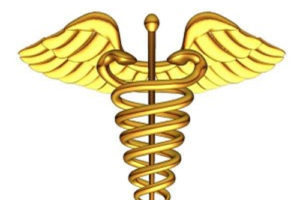Rising Mortality Rates Challenge Russia’s Efforts To Kick-Start Population Growth

(Article text ©2019 RFE/RL, Inc., Radio Free Europe/Radio Liberty – rferl.org – Matthew Luxmoore – April 4, 2019 – article text also appeared at rferl.org/a/rising-mortality-rates-challenge-population-growth-decline-putin-demographics/29861882.html)
Every third region in Russia saw a spike in mortality rates in 2018, according to health officials, contributing to the country’s first population decline in a decade and highlighting the challenges of fending off a protracted demographic crisis.
In a speech before Russia’s parliament on April 3, Tatyana Golikova, the deputy prime minister responsible for social and health policy, urged regional authorities to help counter the trend.
“I should say the mortality rate rose in 32 regions in 2018. But I should also mention that the resources are there for the regions to lower mortality,” she told deputies in Moscow.
Russia’s population fell last year by 87,000 people, to less than 147 million, putting a dent in the government’s efforts to overcome the legacy of a demographic crisis that emerged in the 1990s.
Alcohol has been a traditional cause of high mortality rates among Russian men, and the past 10 years have seen the longest anti-alcohol campaign in Russian history, with measures including a ban on advertising hard alcohol and plans to halve overall consumption by 2020.
Quality Of Freedom?
According to reports prepared for a recent Federation Council roundtable on social policy, free Russian men are likely to die earlier than those in prison. Alcohol is seen as the culprit.
“This raises questions about the quality of freedom” in Russia, Interfax cited the reports as concluding.
Yevgeny Andreyev, head of the International Laboratory for Population and Health at Moscow’s Higher School of Economics, told RFE/RL that a modest decline in alcohol consumption has contributed to a longer-term decline in mortality rates nationwide, which is in line with global trends.
He urged caution in interpreting what he described as Golikova’s preliminary figures. “I think it’s worth waiting for the full analysis of the annual statistics on the death rate,” he wrote in e-mailed comments.
The Russian government has placed major emphasis on the demographic issue. From the mid-1960s to the late 1980s, the Russian population rose steadily, but the collapse of the Soviet Union ushered in a population crisis compounded by wage arrears, mass unemployment, and alcohol abuse.
Since his assumption of power in 2000, President Vladimir Putin has made reversing the trend and stimulating population growth one of his signature policies.
The beginning of his fourth presidential term in 2012 coincided with the first recorded natural population growth — subtracting the death rate from the birth rate, and not accounting for immigration — in over two decades.
Although it totaled a mere 2,000 people, it prompted cautious optimism in Russia. That December, Putin stood before a hall full of officials and religious leaders in the Grand Kremlin Palace and praised the success of his government’s social policies during his annual address.
“The demographic programs adopted in the past decade are working, thank God,” he said. “In addition, for the first time in Russia’s modern history we have recorded natural population growth for five months running: the birth rate has finally begun to exceed the death rate.”
The trend didn’t last long, however. By 2016 natural population began dropping again, and the rate has not recovered since. Demography experts predict a steady overall population decline in the years to come. Part of the reason is that immigration, once seen as a bulwark against slumps in reproductive rates, is no longer at levels sufficient to counter population decline.
Top Priority
In May 2018, shortly after his inauguration for a fourth presidential term, Putin signed a decree enumerating the main priorities for his government until 2024 and the goals it should accomplish. Ensuring stable natural population growth was the first point on the list.
Following her speech before parliament on April 3, Golikova appeared on Rossia television’s popular talk show 60 Minutes. She said she had cited the figures on mortality earlier in the day in order to bring them to the attention of regional authorities, who she said should be doing more to counter the negative trend.
“The potential in the regions to lower mortality rates exists, and those measures that will be applied as part of national projects are targeted at overcoming these negative tendencies,” she said.
The current downturn is in part connected with a drop in the number of women of child-bearing age, Golikova said — those born during the precipitous slump of the 1990s.
The first five months of 2018 witnessed 28 percent fewer births than the equivalent period in 2017, according to figures from state statistics agency Rosstat.
The Russian government has sought to encourage reproduction by providing financial incentives to women as part of its so-called maternity capital program, which currently provides mothers with a subsidy of around 453,000 rubles ($7,000) to help support their second child.
In February, Putin proposed expanding the program by giving mortgage subsidies to women who have three or more children. And there are indications more will be done.
In her television appearance, Golikova said talks were under way to also begin providing such support for the first child as part of a broader demographic campaign aimed at the “preservation of the Russian nation.”
